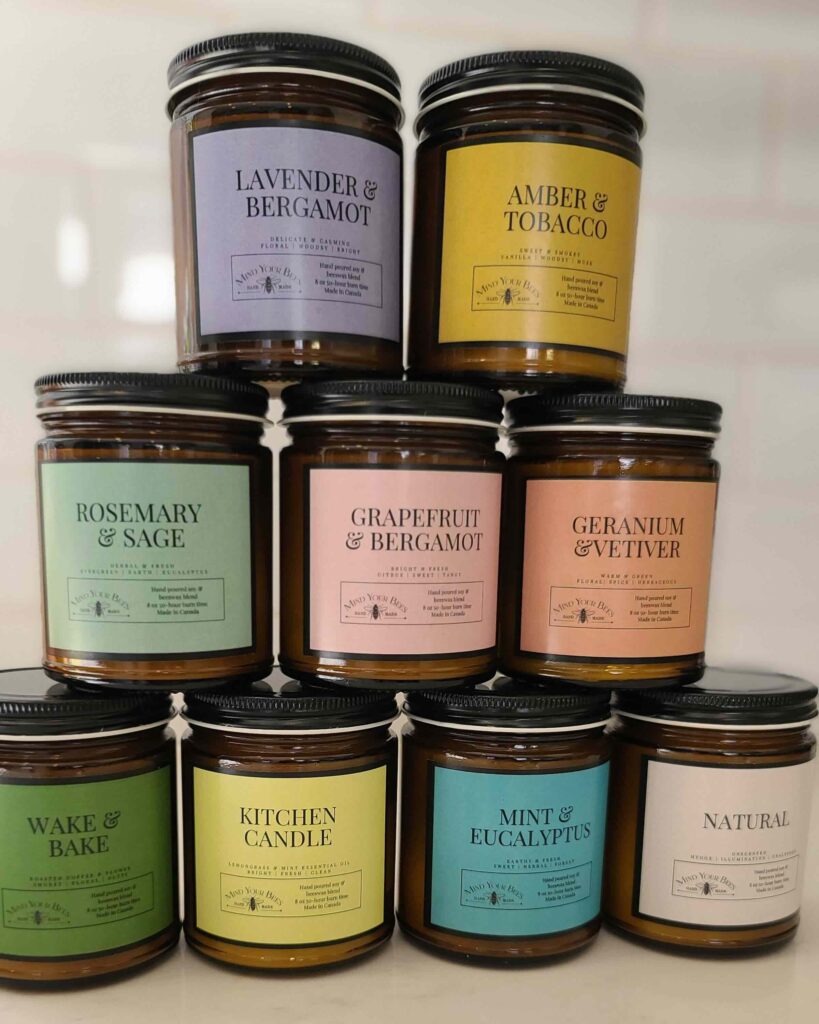The bees have it
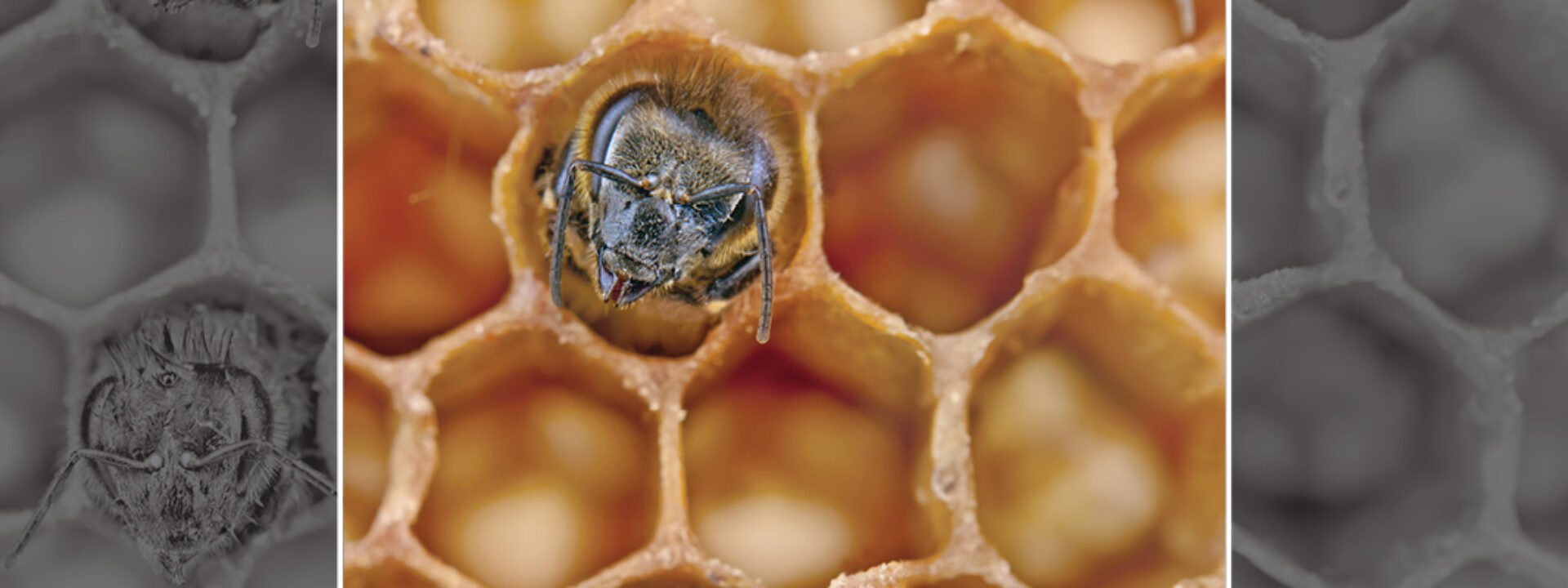
Hamilton and Burlington are home to producers and entrepreneurs who are raising bees, collecting honey and wax, and then doing remarkable things with it.
A few weeks ago, I came back from a weekend conference where I had done a bit too much talking, too much singing, and too much raising my voice over the dinnertime crowd. My throat was a mess. So I reached for our two favourite sore throat remedies in the house: a hot cup of tea and a spoonful of honey.
We all know honey, whether we’re drizzling it on toast, or swirling it in tea, is a lovely little thing that makes everything just a bit sweeter, naturally. Honey isn’t processed anywhere near as much as cane or beet sugar, so as a result, it has the lowest carbon footprint of any sweetener.
Honey is so simple, and so common, that we probably take it for granted, but it is a remarkable thing. Left on its own, honey will keep indefinitely. They have excavated honey from the tombs of ancient pharaohs, only to find it perfectly edible.
It turns out that raising bees, collecting honey and wax and then doing remarkable things with that honey and wax is a thriving concern in Hamilton and Burlington. Which is a good thing, after nearly a decade of bees making front page news for being under threat of dying out. Whether it was neonicotinoid herbicides, varoa mites, or colony collapse disorder, the bees were under threat. And with bees pollinating an estimated 35 per cent of all the food we see in grocery stores, they’re a neighbour we can’t afford to live without.
The beekeeper
Terri Faloney is the head beekeeper at Hammer Hives. She’s been working with bees for eight years, apprenticing under one of the top beekeepers in Ontario.
She specializes in breeding queen bees for sale, but produces a lot of honey and wax every year.
Getting from a queen bee to honey in your jar, though, is a process with many steps, and one where attention to detail is crucial.
You’ve probably seen them dotting the hillsides on a drive through the rural parts of Hamilton – little white boxes laid in a pattern around the field. These are bee hives, and from them bees emerge and pollinate our crops, and return to make wax and honey in the hive. These white boxes contain supers and frames. Supers are a collection of frames, and the frames are the places where the bees live, and then make their honey. Those frames can then be pulled out and the honey removed. It seems simple at first, but there are lots of moving parts, and everything must be done to keep the health of the bees in mind.
The process starts with a queen and a solid colony of 10,000 or so. ”That colony will grow into a full-sized colony, which is about 40,000 strong,” explains Faloney. “Once you hit that point, you add a queen excluder that prevents the queen from laying any eggs in the honey super that you have added above. That way when you go to extract, you have just straight slabs of honey.”
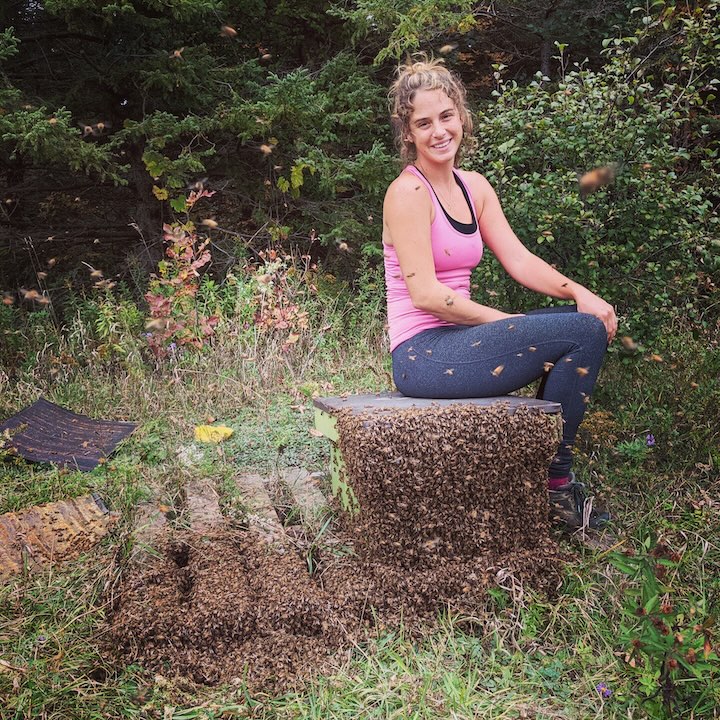
Photo: Courtesy Terri Faloney
From there, you attach a special one-way trap door, called a Quebec-style bee escape, to keep the bees out of the honey when you harvest it. Then at the end, you give some of the honey back to the bees for winter before harvesting it.
“So that makes it very ethical when you extract the honey and there’s no bees floating around in there.”
Faloney uses plastic foundation frames. These foundations have a plastic sheet with hexagons that the bees place their honey into that mimic natural honeycombs. When she takes the super back into the shop, there is a cap of wax over the frame that she removes and uses for candles.
“From there, you put the frame into an extractor to pull the honey out using centrifugal force,” Faloney explains. Then it goes through a series of gravity and fabric filters to remove any lumps of wax or debris.
“I never apply any heat, and I never use pasteurization, and it’s pumped into a tank which is kept at a consistent 20 C to keep it a liquid.”
Faloney acknowledges that she is a comparatively small operation. “Last year, I had the most hives ever. I had 80 hives, and honestly that’s nothing. I work with guys who have thousands. There are people who do almond pollination who have 50,000 hives.”
Over the course of a summer, Faloney’s 80 hives produce about 10,000 lbs of honey. In the interest of keeping the bees healthy, though, she let them keep the lion’s share, taking 4,000 lbs to sell at local markets and through her online store.
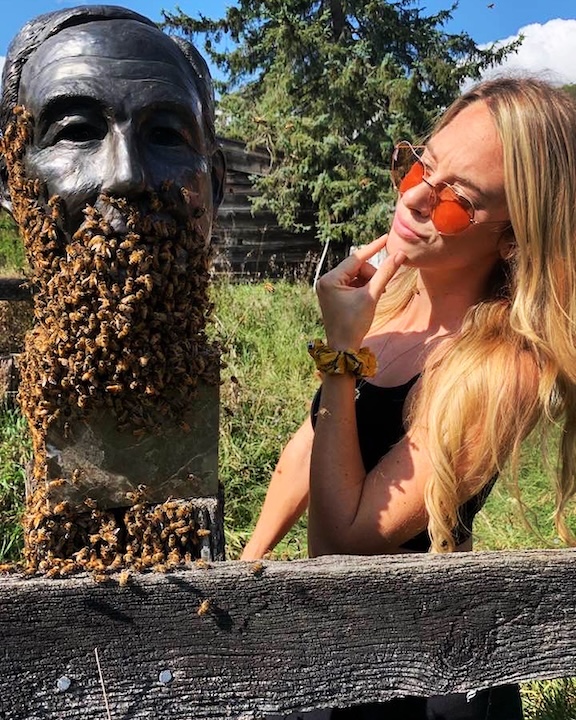
Being a woman in beekeeping is relatively rare, something that Faloney ascribes to the physically demanding nature of the role. “There is a lot of heavy lifting. It’s very strenuous when you’re lifting a 100-pound frame stuck on with propolis (a resin bees produce to build and repair their hives) while 40,000 bees swirl around you trying to figure out what’s going on,” she says.
“Plus, a lot of women are conditioned to not like bugs. Women are conditioned to be clean and proper, and to like pretty things, and not bugs” she adds, with a hint of regret. Still she hasn’t experienced stigma, and, on the contrary, says that men in the industry view her as powerful.
“It’s a lot of work, it’s a lot of patience, it’s very strenuous. But it’s very rewarding, and working with bees is just magical,” Faloney enthuses.
“They are my children,” she says with a laugh. “I love my babies so much I’m always talking to them. I give them snacks like watermelon, and they love to taste the salt on my skin. I just want to make sure they have anything that they need. They help me a lot, too.”
Faloney describes how beneficial the bees have been to her mental health. “They definitely reverse PTSD, they definitely help with trauma. I just have a good relationship with them.”
The entrepreneur
Luc Peters has a similar reverence for the creatures he works with. His apiary Humble Bee has hives dotted all over rural and urban Hamilton, including on the roof of Strathcona Market.
He got into beekeeping 15 years ago when he read that bees were having a really hard time. “I mean they still are,” he explains, “but it was one of the first major die-offs that we had seen.”
He was initially more interested in working with bumble bees, which are more threatened than honeybees in many cases. He worked with bumble bees for a short while, but perhaps unsurprisingly found greater opportunities in honeybees.
Peters then moved to an industrial-scale bee farm, an operation with 2,000 hives. “I was the only non-migrant worker and it really showed me what farming was in an industrial sense.” At the same time, he began working with a smaller farm and keeping his own bees. With that, he was able to contrast the different ways of managing hives and honey production.
In the end he was “totally taken over by the bees.”
Peters founded Humble Bee 11 years ago, partially from a desire for people to experience “real honey.” Sometimes, he explains, what you find in the grocery stores that is labelled as honey doesn’t contain much honey at all.
“There are still a lot of … how do I put this nicely … mislabelled products,” he says. Many are other syrups with just 10 per cent honey added in for flavour.
“Honey is a special thing,” Peters continues. “It’s a food. It’s a medicine. It’s the only food that doesn’t go bad. The lore around it is incredible. It’s a very pure product in itself, and we don’t need to do anything to honey to make it better.”
He has been asked often if he blends his honey with other things, to change the flavour, but he keeps it simple. “I want to start with the honey jar with just pure straight-up honey, so everyone can experience that.
“I still get people from all ages, who come into the shop to try it and it’s the first time they have ever tried real honey,” he says. “That for me is the reward.”
On top of all this, Humble Bee’s storefront on Burlington Street is a full beekeeping supply shop. Here, Peters sells not only honey and wax, but also all of the equipment you would need to start keeping bees yourself. And if you’re unsure where to start, he runs regular beehive tours, and classes for beginners who want to try it out.
Despite Peters’ insistence that honey doesn’t need anything to make it better, people have been working with honey for thousands of years to make it into other things.
And one of the first things that early civilizations did with honey was to ferment it. Mead is a product made largely from fermented honey, and it is the oldest known alcoholic drink, dating back to the earliest days of prehistoric agriculture.
The mead maker
Vincent Sowa is the head mead maker at Backed by Bees on Appleby Line in Burlington. He started making mead as a home brewer 15 years ago and trained as a cider maker because there is no formal training for mead makers.
“Everyone who is doing it is self taught,” Sowa says.
Backed by Bees opened in 2019 and has been making amazing mead ever since.
“It’s so neat because it’s such a large category itself,” he says. “I tell people if you can imagine it, I can make it.”
In some ways the process is similar to making beer, using heat to process the honey, while in other ways it’s closer to wine or cider and can be matured for years.

They do it both ways, with one version that goes “from honey to glass in 30 days.” Other versions are barrel aged for up to three years.
Micro-oxidization is the secret to why aged mead tastes so great. “It smooths out the higher alcohols, so you barely notice they are there,” Sowa explains. “We tell people that the barrel-aged product is like drinking scotch without the burn.”
The process is deceptively simple. They just add honey to warm water and pitch yeast to start the fermenting process. But the devil, as always, is in the details, including minor adjustments with acidity and Ph in the water.
“Of course with mead making, the secret sauce is the nutrient additions.”
For the first fermentation it’s often only honey and water and nutrients, but for the second round they sometimes add fruit or other flavours.
They carefully measure everything that goes into the mead. “We measure sugar content and water content certainly. If we’re really interested in the floral source, there are labs out there that will tell you what your nectar sources are,” he says.
“The process is fairly basic, but it’s all the back-end work on balance that is the secret.”
There are regulations around meaderies. They need to have 100 bee hives and do some of their honey extraction on site. Backed By Bees, however, has a lot more bees than that.
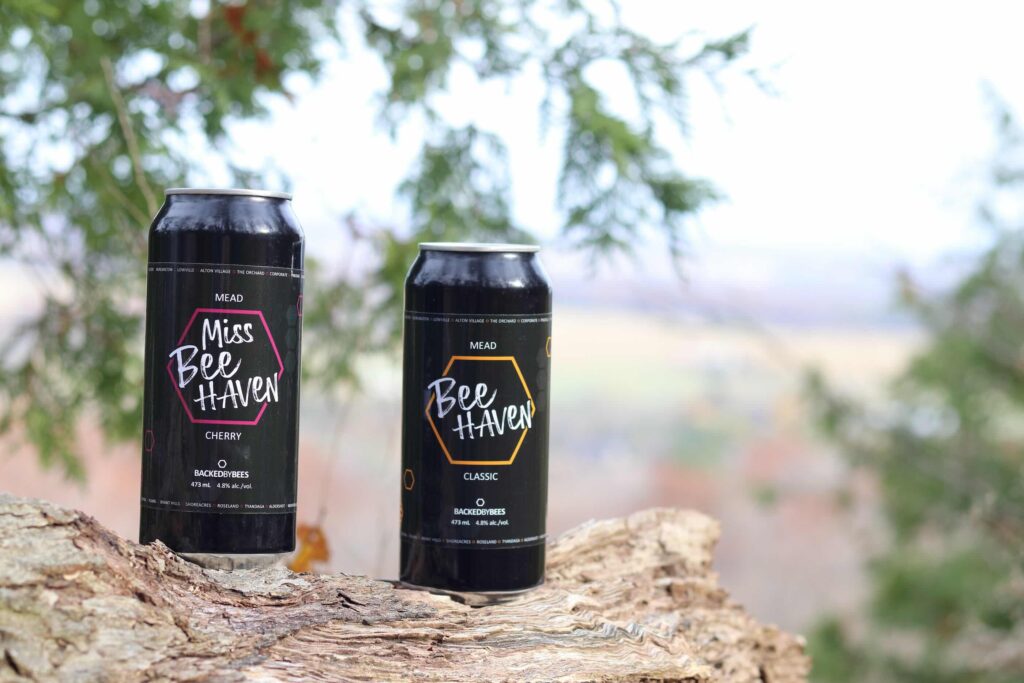
“We actually are a mid-sized commercial beekeeping operation. We keep over 700 colonies.” They do everything with their hives from agricultural pollination to selling honey and wax.
Despite the alcohol industry experiencing declining sales, Backed by Bees continues to thrive and grow, with plans in place to band together with other meaderies to grow the industry and increase the popularity of the drink.
One way Sowa is doing that is by running monthly 90-minute mead explorer classes. Here Sowa and a head beekeeper walk participants through the whole process of making mead and allow them to sample what various types taste like at different stages of production.
Sowa is upbeat about the future of mead. “It’s where the cider industry was about five years ago. A lot of people don’t know what we are.”
In the past when he ran the mead explorer classes, most participants had never tried mead. Now when he holds the classes, everyone has.
“If we’re having this conversation in five years, it’s going to be a lot different than it is today.”
The wax wrapper
Besides honey, and some of its more delicious products, one product of beekeeping that may not get as much attention is the wax.
In pre-industrial times, when everyone lit their homes with candles, the wax produced by bees was just as valuable as the honey, if not more so. Nowadays wax is almost an afterthought, reserved for fancy candles that are often as decorative as they are functional.
But what if someone came up with a whole new way of keeping food fresh without using chemical-filled plastic that will be in landfills for the next thousand years?
Enter beeswax wraps, and Hamilton’s own producer of them, Mind Your Bees.
Ashley Shortall founded the company in 2017, and she buzzes about how beeswax-infused wraps are just a better way to store your food.
“When you use them regularly, you will notice how much plastic waste is reduced in your home,” she says.
Wraps can be used in place of cling film to cover bowls and dishes to make them into a reusable container that goes in your fridge or pantry.
Where they really come into their own, though, is wrapping fresh greens.
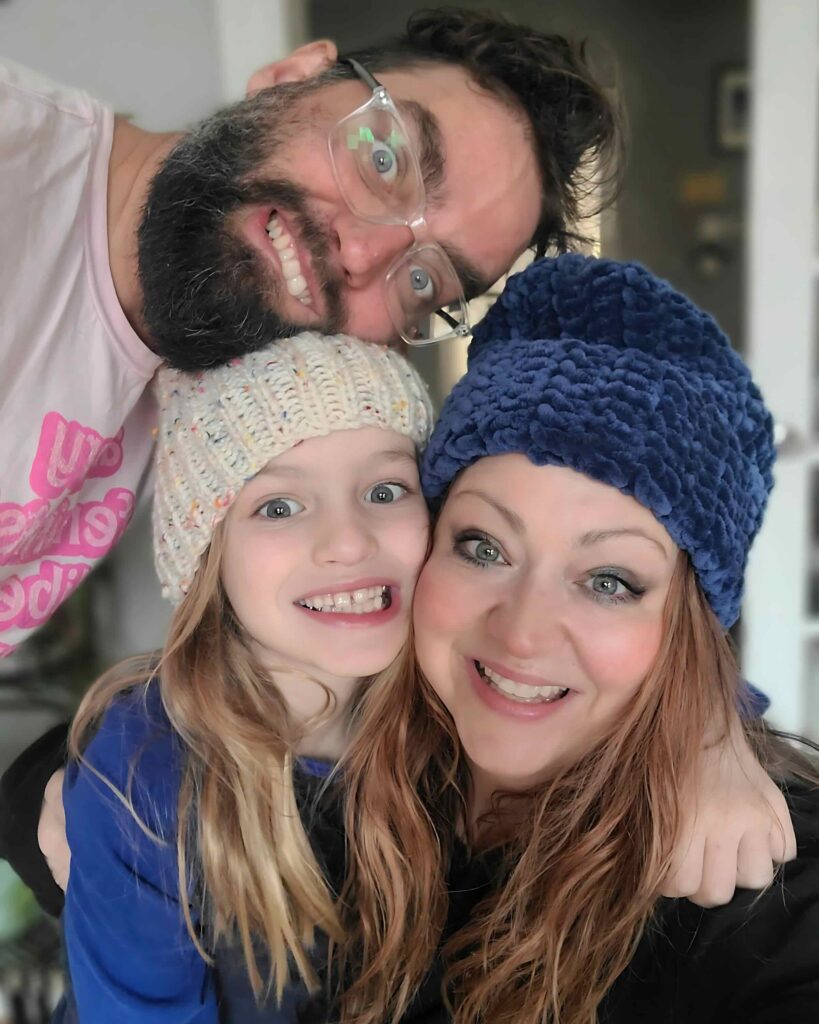
“Fully exposed greens will wilt very quickly, and greens put in plastic will just turn into sludge,” Shortall describes. “We’ve all had a bag of sludge in the back of the fridge.”
When she wraps her greens in beeswax wraps, however, they stay fresh much longer. “I can pull cilantro out of my fridge after two or three weeks and it will still be completely usable.”
To pile on the environmental benefits, Shortall only uses organic, certified fair-trade cotton for her wraps, which she sources directly from India.
From there, various patterns are printed on the fabric in Canada, and she adds her special mixture to them.
“I infuse them with a mixture of wax, jojoba oil, pine resin, and the secret ingredient coconut wax, which makes the wraps more flexible and keeps them from cracking.”
Her fabric is cut locally by a woman who experiences barriers to employment. Once the fabric is cut, Shortall and her team use rollers to apply the mixture onto the wraps, and then press them in repurposed T-shirt presses that melt the wax deeply into the fabric and seal it in.
With the row of presses, the back of her shop in the Cotton Factory looks like a giant waffle factory, and the aroma? Heavenly. The smell of honey naturally infuses all beeswax, and you are hit with a wall of scent as soon as you walk into the shop.
Shortall’s business has changed dramatically since she opened. Many of the large retailers like Hudson’s Bay, and smaller independent shops that carried her product have either moved on from wraps, or have closed, and she has pivoted to providing bespoke corporate gifts.
She also does a series of markets and festivals, and has a vigorous online presence.
“If you’re a small business, and you don’t pivot?” she says. “You’re done.”
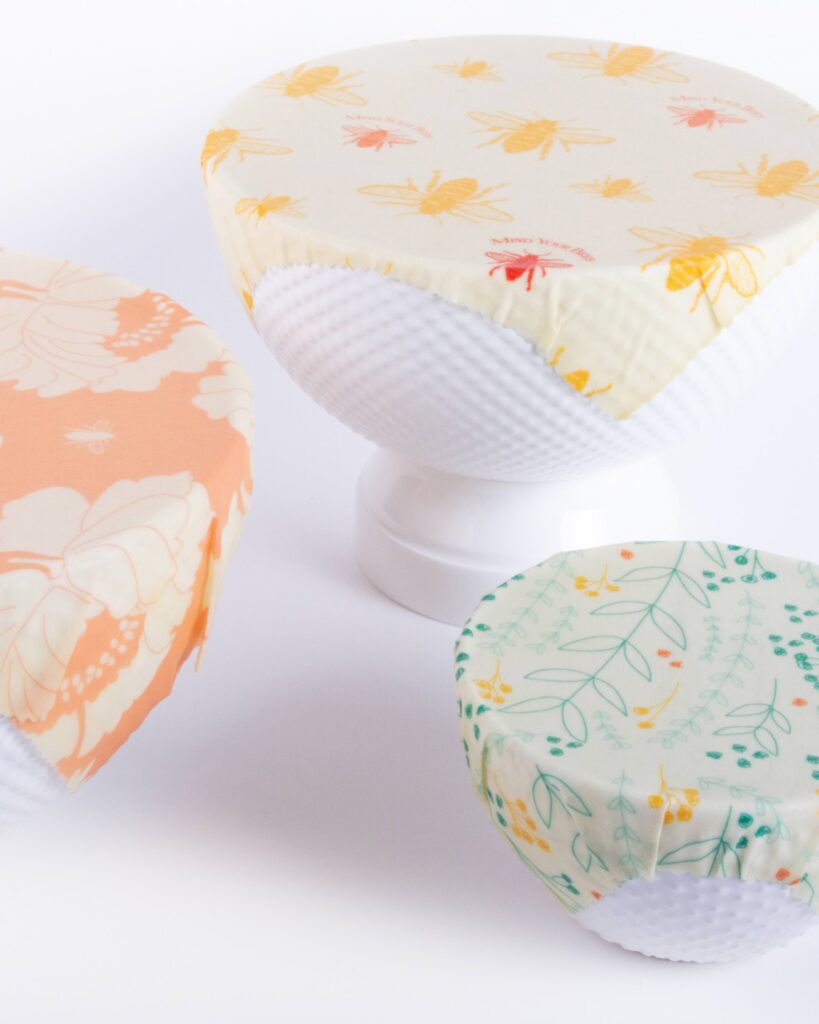
It’s that nimbleness and responsiveness to people’s needs and desires that has caused her to branch out into other wax products like candles. She is constantly looking for the next thing and the next way to ensure people know about and use her eco-friendly product.
Shortall gets her wax in industrial quantities from one of the only producers in the area big enough to supply her, Dutchman’s Gold in Carlisle.
But her supply chain is typical of the interconnectedness of the whole bee/honey/wax industry in Hamilton and Burlington.
Backed By Bees stocks Mind Your Bees wraps in its store alongside honey, candles and mead, and Hammer Hives is also working with Mind Your Bees on a new, top-secret location for a hive.
Everyone in the industry speaks with so much affection for everyone else, it’s clear the industry is too small to be competitive. It seems that the very nature of working with bees, honey and wax tends to attract people who naturally get along with others and want to do good for the planet and for other people.
Bees and honey and wax have been part of how people have eaten and drank and lived for many thousands of years. With such a thriving bee and beekeeping industry in Hamilton, we can be sure they will be with us for many more years to come.
